CASTELSEPRIO - TORBA
The Site
The site of Castelseprio-Torba, part of a late Roman high altitude fortified system, was re-used by Longobards as fortress.



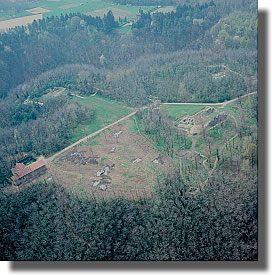 The area of the castrum |
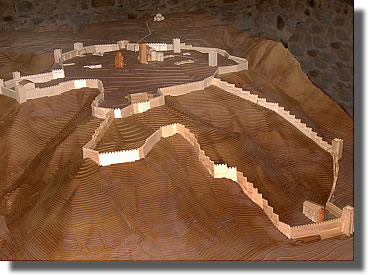 3D reconstruction of the castrum |
The CASTRUM, destroyed by the Visconti in the late 13th century - with the exception of buildings of worship - still keeps the impo¬sing ring-wall, the housing system and the main worship com¬plex of San Giovanni Evangelista, with Basilica and annexed octa¬gonal Baptistery, completely reconstructed by the Longobards in the 7th century and used internally and externally for the burial of important local personages.
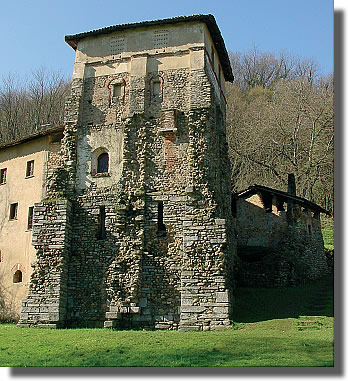
The Torba Tower
A particularly significant example of military architecture is the TORBA TOWER which, in late Longobard times, was used as a nuns’ Convent.
The CHURCH OF SANTA MARIA foris portas, outside the walls where the burg developed in the Early Middle Ages, was erected as a private ari¬stocratic building with annexed cemetery.
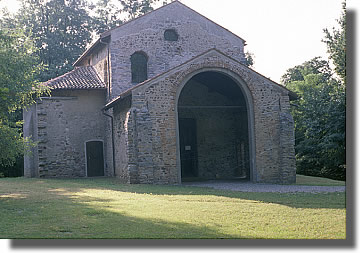
Santa Maria foris portas
It preserves one of the finest pictorial texts of the whole Early Middle Ages; the scenes dedicated to the story of the childhood of Christ are presented in the central apse of the small triple-apse structure, enriched with an inlaid marble floor. The series of figures is complex and dense with episodes and references, alternated with symbolic images.
The complex as a whole represents an extraordinary example of castrensian settlement which stands out for its spatial organization, monumentality and typological variety of its buildings.
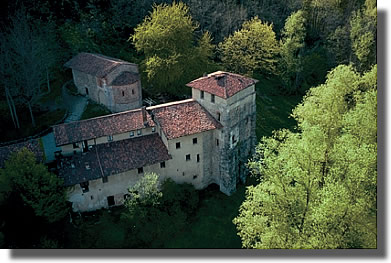
View of the Torba complex
The great number of worship buildings, characterized by different functions, public and private, is a proof of the influential relationship of the Longobard élites with the Church, to the extent of creating a “new” model of settlement where the sacred places played a primary role in the power strategies.
Due to its marked double function of both defensive and demic structure, the complex represent a fundamental reference for the most typical medieval settlement: the “castle”.
The lack of continuity in the utilization of the area contributed to preserve the habitat, which still today enables to appreciate all the geo-morphological features that since the ancient times made it an eligible place for the foundation of a castrum.
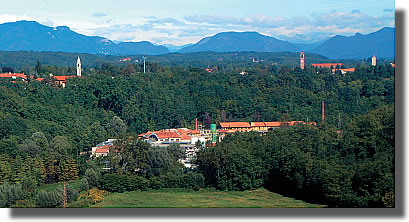
The Castelseprio-Torba area
The articulated functional organization of the spaces and structures as well as the high standard of the decorations express the social prestige of the commission, of direct royal emanation.
In particular, the plurality of the cultural traditions that contributed to the construction and definition of a such exceptional site outlines an attentive social environment open to the consolidated experiences coming from the Byzantine and Roman worlds in the painting and architectonic models, but also active in the experimentation in the urban field and military architecture.
While Cividale and Brescia, like Benevento, demonstrate the settlement methods of the Longobards within the most important cities in the urban system created by the Romans, Castelseprio-Torba is an excellent testimony of how high altitude fortified systems, which developed during the late Roman era following the first Barbarian invasions, were re-used.


